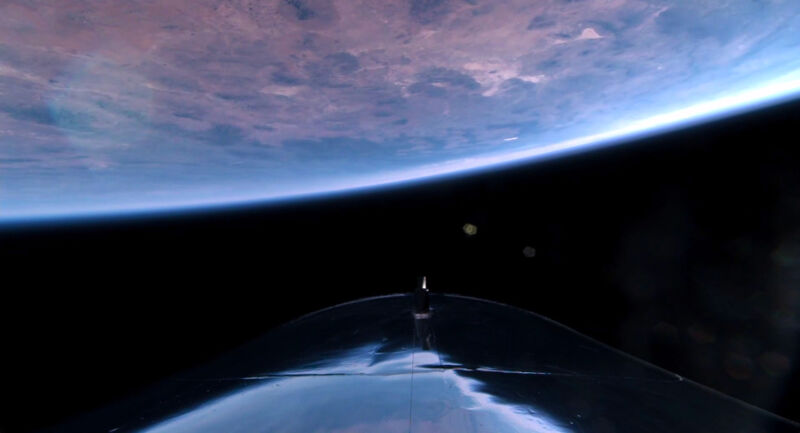Enlarge / The view of Earth’s curved horizon from Virgin Galactic’s SpaceShipTwo rocketplane. (credit: Virgin Galactic)
It has been fun to watch Virgin Galactic string together six flights to suborbital space this year. The company was founded by Richard Branson in 2004 to open the experience of spaceflight to everyday people and make some money in the process. Virgin Galactic hasn’t achieved those goals yet, but the company has reason to celebrate its successes over the last six months.
There is sometimes ribbing of Virgin Galactic and Blue Origin from space enthusiasts because they don’t fly astronauts or payloads into orbit, and they cater to wealthy clients. Passengers on a Virgin Galactic or Blue Origin flight experience a few minutes of weightlessness as they reach the apex of a trajectory that, in Virgin Galactic’s case, barely breaks the 80-kilometer (50-mile) threshold, the altitude where space begins, based on the US government’s definition.
But they offer access to microgravity and the space environment at a fraction of the cost of an orbital flight. Instead of several tens of millions of dollars per seat, we’re talking about $450,000 for a ride to space with Virgin Galactic. Blue Origin costs a bit more.
Read 14 remaining paragraphs | Comments

